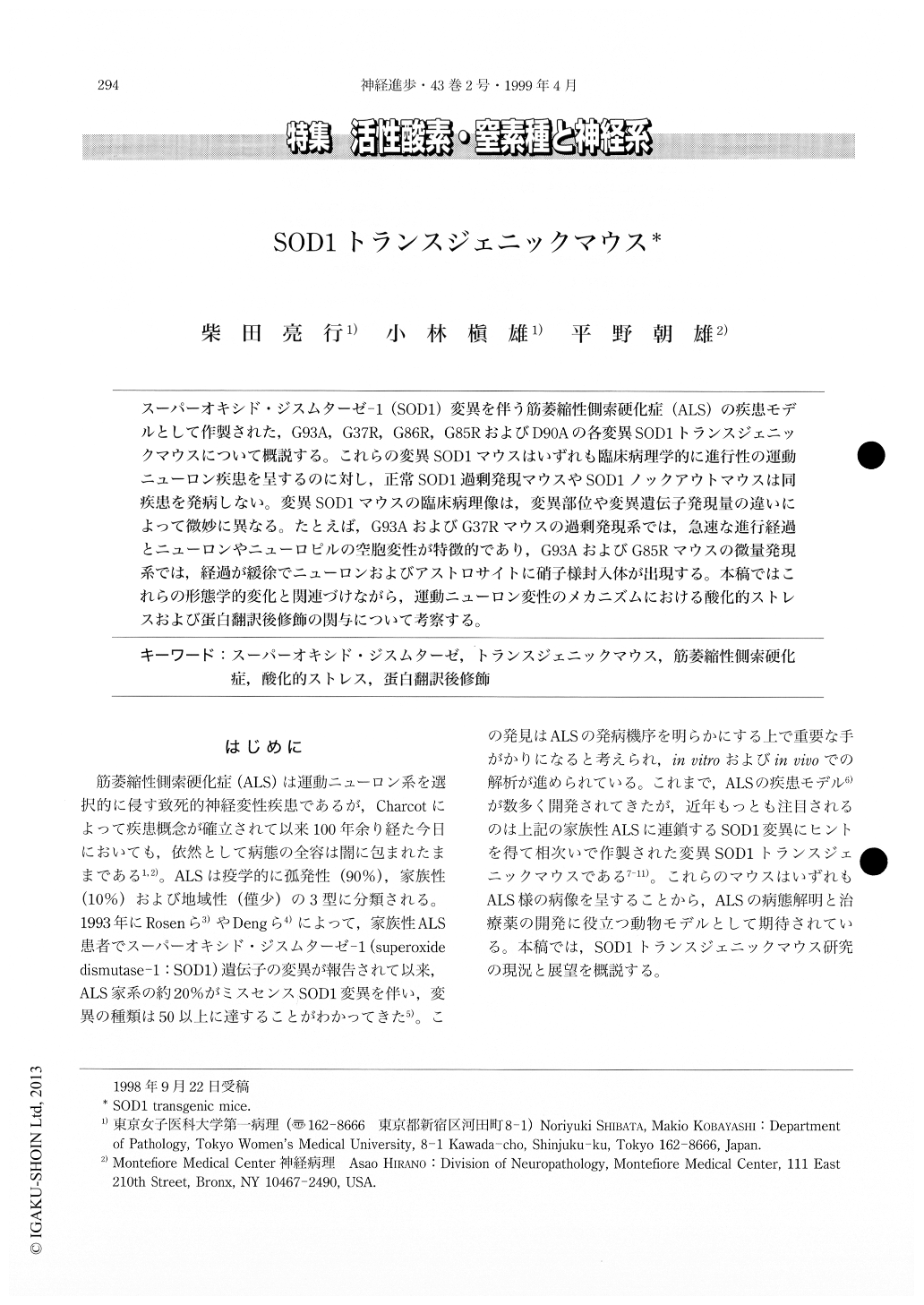Japanese
English
- 有料閲覧
- Abstract 文献概要
- 1ページ目 Look Inside
スーパーオキシド・ジスムターゼ-1(SOD1)変異を伴う筋萎縮性側索硬化症(ALS)の疾患モデルとして作製された,G93A,G37R,G86R,G85RおよびD90Aの各変異SOD1トランスジェニックマウスについて概説する。これらの変異SOD1マウスはいずれも臨床病理学的に進行性の運動ニューロン疾患を呈するのに対し,正常SOD1過剰発現マウスやSOD1ノックアウトマウスは同疾患を発病しない。変異SOD1マウスの臨床病理像は,変異部位や変異遺伝子発現量の違いによって微妙に異なる。たとえば,G93AおよびG37Rマウスの過剰発現系では,急速な進行経過とニューロンやニューロピルの空胞変性が特徴的であり,G93AおよびG85Rマウスの微量発現系では,経過が緩徐でニューロンおよびアストロサイトに硝子様封入体が出現する。本稿ではこれらの形態学的変化と関連づけながら,運動ニューロン変性のメカニズムにおける酸化的ストレスおよび蛋白翻訳後修飾の関与について考察する。
Amyotrophic lateral sclerosis (ALS) is a devastating neurodegenerative disorder that primarily involves the motor neuron system. Recent studies have obtained evidence that mutations in the gene for superoxide dismutase-1 (SOD1) are associated with 20% of patients with familial ALS. Although neither wild-type SOD1-overexpressing mice nor SOD1-knockout mice show ALS-like disorder, transgenic mice expressing SOD1 mutants (G93A, G37R, G86R, G85R and D90A) detected in familial ALS cases develop a motor neuron disease with a variety of clinicopathological features corresponding to mutation sites and expression levels of a mutated gene.

Copyright © 1999, Igaku-Shoin Ltd. All rights reserved.


